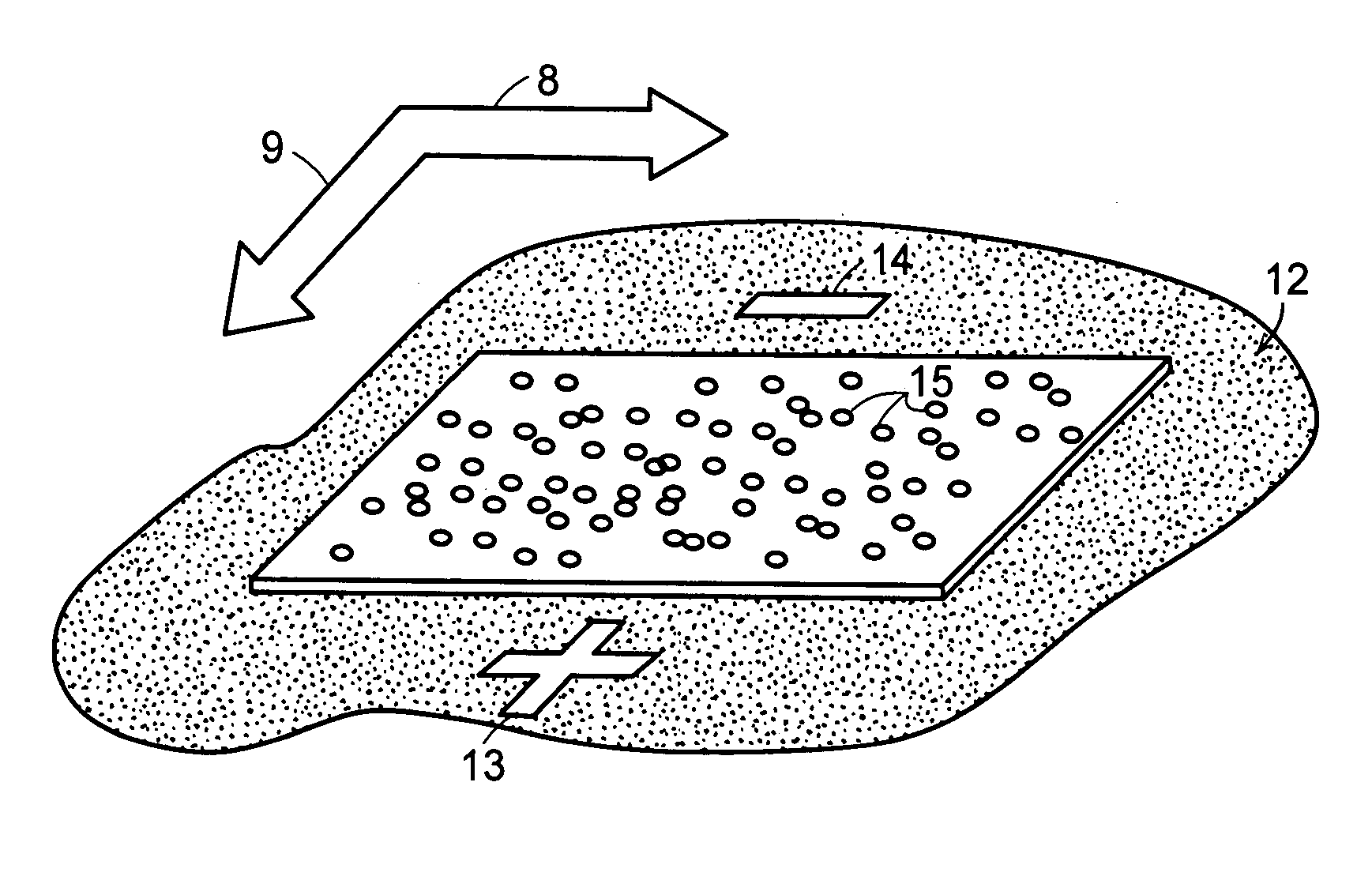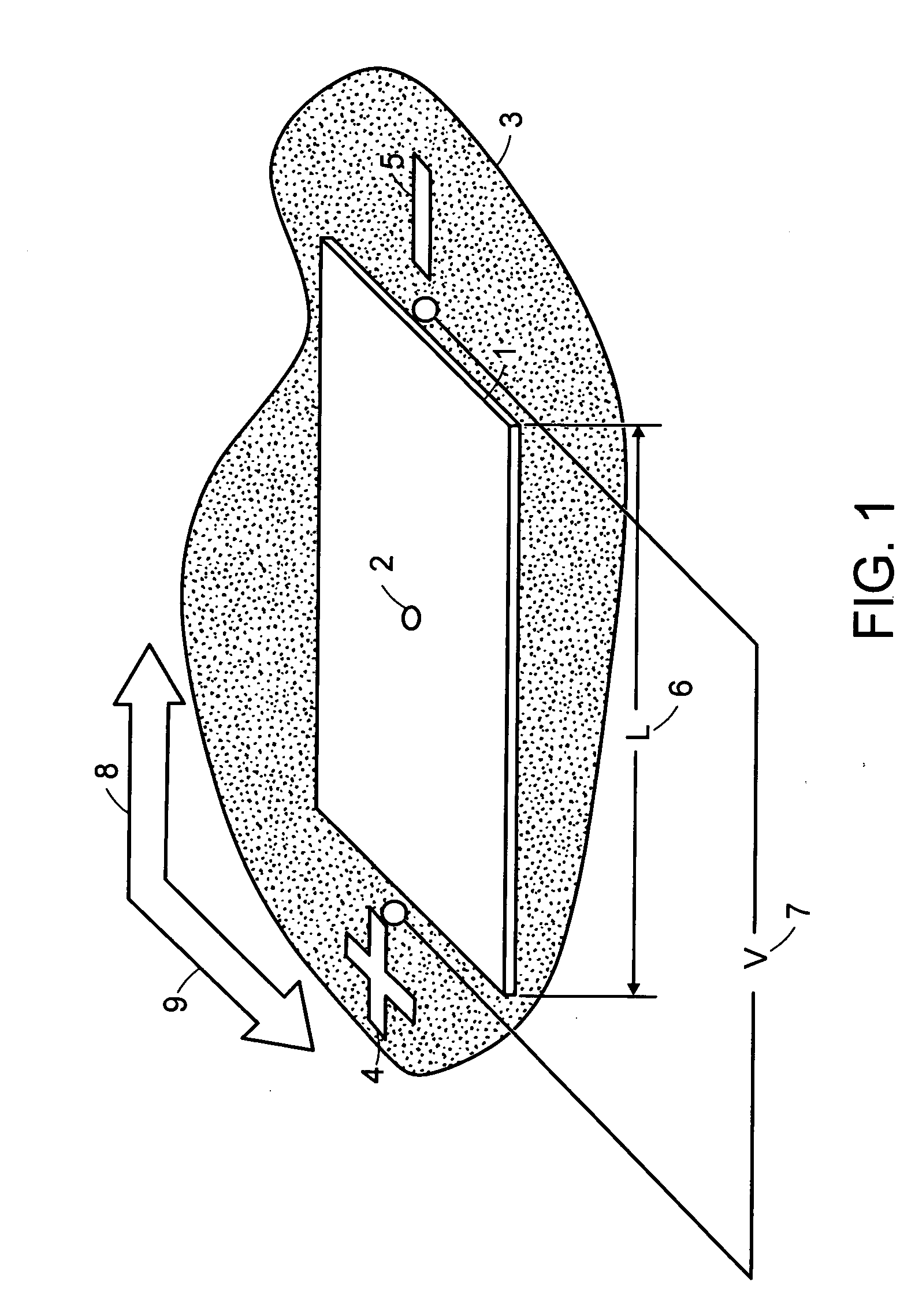Separations platform based upon electroosmosis-driven planar chromatography
- Summary
- Abstract
- Description
- Claims
- Application Information
AI Technical Summary
Benefits of technology
Problems solved by technology
Method used
Image
Examples
Embodiment Construction
[0048] System and methods for separation of biomolecules, e.g., proteins, peptides, amino acids, oligosaccharides, glycans and even small drug molecules, using electroosmosis-driven planar chromatography are described. In electroosmosis-driven planar chromatography an amphiphilic polymeric membrane, amphiphilic thin-layer chromatography plate or similar planar substrate provides the stationary phase for the separation platform. The planar substrate surface is characterized by a combination of charge carrying groups (ion exchangers), non-covalent groups (counterions), and nonionic groups that facilitate chemical interactions with the analyte, e.g., proteins or peptides. In a method for the separation of biomolecules using a planar electrochromatographic system, electroosmotic flow is generated by application of a voltage across the planar support in the presence of a miscible organic solvent-aqueous buffer mobile phase. Charged ions accumulate at the electrical double layer of the so...
PUM
| Property | Measurement | Unit |
|---|---|---|
| Diameter | aaaaa | aaaaa |
| Diameter | aaaaa | aaaaa |
| Diameter | aaaaa | aaaaa |
Abstract
Description
Claims
Application Information
 Login to View More
Login to View More - R&D
- Intellectual Property
- Life Sciences
- Materials
- Tech Scout
- Unparalleled Data Quality
- Higher Quality Content
- 60% Fewer Hallucinations
Browse by: Latest US Patents, China's latest patents, Technical Efficacy Thesaurus, Application Domain, Technology Topic, Popular Technical Reports.
© 2025 PatSnap. All rights reserved.Legal|Privacy policy|Modern Slavery Act Transparency Statement|Sitemap|About US| Contact US: help@patsnap.com



